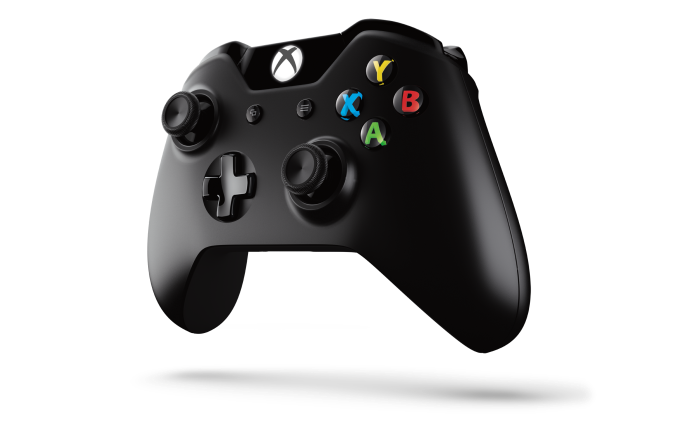The Xbox One: Hardware Analysis & Comparison to PlayStation 4
by Anand Lal Shimpi on May 22, 2013 8:00 AM ESTPower & Thermals
Microsoft made a point to focus on the Xbox One’s new power states during its introduction. Remember that when the Xbox 360 was introduced, power gating wasn’t present in any shipping CPU or GPU architectures. The Xbox One (and likely the PlayStation 4) can power gate unused CPU cores. AMD’s GCN architecture supports power gating, so I’d assume that parts of the GPU can be power gated as well. Dynamic frequency/voltage scaling is also supported. The result is that we should see a good dynamic range of power consumption on the Xbox One, compared to the Xbox 360’s more on/off nature.
AMD’s Jaguar is quite power efficient, capable of low single digit idle power so I would expect far lower idle power consumption than even the current slim Xbox 360 (50W would be easy, 20W should be doable for truly idle). Under heavy gaming load I’d expect to see higher power consumption than the current Xbox 360, but still less than the original 2005 Xbox 360.
Compared to the PlayStation 4, Microsoft should have the cooler running console under load. Fewer GPU ALUs and lower power memory don’t help with performance but do at least offer one side benefit.
OS
The Xbox One is powered by two independent OSes running on a custom version of Microsoft’s Hyper-V hypervisor. Microsoft made the hypervisor very lightweight, and created hard partitions of system resources for the two OSes that run on top of it: the Xbox OS and the Windows kernel.
The Xbox OS is used to play games, while the Windows kernel effectively handles all apps (as well as things like some of the processing for Kinect inputs). Since both OSes are just VMs on the same hypervisor, they are both running simultaneously all of the time, enabling seamless switching between the two. With much faster hardware and more cores (8 vs 3 in the Xbox 360), Microsoft can likely dedicate Xbox 360-like CPU performance to the Windows kernel while running games without any negative performance impact. Transitioning in/out of a game should be very quick thanks to this architecture. It makes a ton of sense.
Similarly, you can now multitask with apps. Microsoft enabled Windows 8-like multitasking where you can snap an app to one side of the screen while watching a video or playing a game on the other.
The hard partitioning of resources would be nice to know more about. The easiest thing would be to dedicate a Jaguar compute module to each OS, but that might end up being overkill for the Windows kernel and insufficient for some gaming workloads. I suspect ~1GB of system memory ends up being carved off for Windows.
Kinect & New Controller
All Xbox One consoles will ship with a bundled Kinect sensor. Game console accessories generally don’t do all that well if they’re optional. Kinect seemed to be the exception to the rule, but Microsoft is very focused on Kinect being a part of the Xbox going forward so integration here makes sense.
The One’s introduction was done entirely via Kinect enabled voice and gesture controls. You can even wake the Xbox One from a sleep state using voice (say “Xbox on”), leveraging Kinect and good power gating at the silicon level. You can use large two-hand pinch and stretch gestures to quickly move in and out of the One’s home screen.
The Kinect sensor itself is one of 5 semi-custom silicon elements in the Xbox One - the other four are: SoC, PCH, Kinect IO chip and Blu-ray DSP (read: the end of optical drive based exploits). In the One’s Kinect implementation Microsoft goes from a 640 x 480 sensor to 1920 x 1080 (I’m assuming 1080p for the depth stream as well). The camera’s field of view was increased by 60%, allowing support for up to 6 recognized skeletons (compared to 2 in the original Kinect). Taller users can now get closer to the camera thanks to the larger FOV, similarly the sensor can be used in smaller rooms.
The Xbox One will also ship with a new redesigned wireless controller with vibrating triggers:
Thanks to Kinect's higher resolution and more sensitive camera, the console should be able to identify who is gaming and automatically pair the user to the controller.
TV
The Xbox One features a HDMI input for cable TV passthrough (from a cable box or some other tuner with HDMI out). Content passed through can be viewed with overlays from the Xbox or just as you would if the Xbox wasn’t present. Microsoft built its own electronic program guide that allows you to tune channels by name, not just channel number (e.g. say “Watch HBO”). The implementation looks pretty slick, and should hopefully keep you from having to switch inputs on your TV - the Xbox One should drive everything. Microsoft appears to be doing its best to merge legacy TV with the new world of buying/renting content via Xbox Live. It’s a smart move.
One area where Microsoft is being a bit more aggressive is in its work with the NFL. Microsoft demonstrated fantasy football integration while watching NFL passed through to the Xbox One.














245 Comments
View All Comments
Thermalzeal - Wednesday, May 29, 2013 - link
Anand, any information on whether the Xbox One will utilize HMA (Hybrid Memory Access) in comparison to the PS4?tipoo - Wednesday, May 29, 2013 - link
Do you mean HUMA by any chance? Yes, both would have that.Buccomatic - Friday, May 31, 2013 - link
xbox one - everything we don't want in a video game console, except the controller.ps3 - everything we do want in a video game console, except the controller.
that's how i see it.
Buccomatic - Friday, May 31, 2013 - link
can anyone tell me if the following statement is correct or incorrect?pc games will be ports from the games made for consoles. both consoles (xbox one and ps4) will have 5gb vram in their gpu. so that means the system requirements for pc games, as early as december when they start porting games over from the consoles to pc, will require a pc gamer to have a video card of at least 5gb vram, or more, just to run the game.
?
yes or no and why?
fteoath64 - Monday, June 10, 2013 - link
Before the hardware is released and analysed, we have no idea how much of the PS4 GDDR5 ram is going to be shared and/or dedicated for gpu use and how much of those are going to be available to user data. It is anyone's guess at this stage. But the improvements in hUMA design with dual ported frame buffer for gpu and cpu makes it a rather quick gpu by PC standards. Since only one game is loaded at a time, there can be shared memory reconfiguration going on just before the game loading so it can depend on the game and how much ram it can grab. The cpu counts very little in the process and it is why it can be clocked at 1.6Ghz rather than storming at 3.6Ghz as in Trinity chips. Still with faster gpu and globs of ram now, there is certainly greater leeway in the development process and optimizing process for game developers. One can assume at 3X the Trinity gpu core counts, the PS4 must be at least 2.5X the speed of Trinity gpus since those ran at 900Mhz. With good cooling, the PS4 could well clock their gpu cores at 1.2Ghz since Intel is going 1.3Ghz on the GT3 core.SnOOziie - Sunday, June 2, 2013 - link
Looking at the motherboard they have use solder balls on CPU to BGA it's going to RRODWolfpup - Monday, June 3, 2013 - link
This has never been an easier choice-Microsoft doesn't let you buy games, Sony does, and their system is 50% more powerful, more focused on games, while Microsoft's off doing yet more Kinnect.SirGCal - Thursday, June 13, 2013 - link
YUP, and as a cripple, what good is flailing my arms about and hopping around like a retard going to do me? Kinetic is about the dumbest thing I've seen people use. Accept for work-out stuff and kids stuff sure, makes sense. But then now they give those in the dial-up and cellular internet locations the finger and say 'stick with the 360' when they know damn well developers won't make games for it within a year... Morons. I'm done with M$. If I do get a new console, it will be the PS4. Besides, I've always loved the Kingdom Hearts series more then any others...NoKidding - Monday, June 24, 2013 - link
i am glad that these consoles have finally seen the light of day. though a bit underpowered compared to an average mid range rig, at least game developers will be forced to utilized each and every available core at such low clock rates on these consoles. heavily threaded games will finally be the norm and not just a mere exception. if the playing field no longer relies heavily on ipc advantages, will amd's "more cores but cheaper" strategy finally catch intel's superior ipc advantage? will amd finally reclaim the low to mid range market? no, not likely. but one can hope so. i yearn for the good old c2d days when intel was forced to pull all the stops.kondor999 - Tuesday, July 16, 2013 - link
Who gives a shit about heat and power consumption in a console? Both machines are miserly, and they're not notebooks for Gods sake. Looks like MS simply cheaped out to me. Letting them off the hook by pointing out the tiny heat/power savings as a "benefit" is a real reach. By this logic, why not just cut the compute power even more?No thanks.